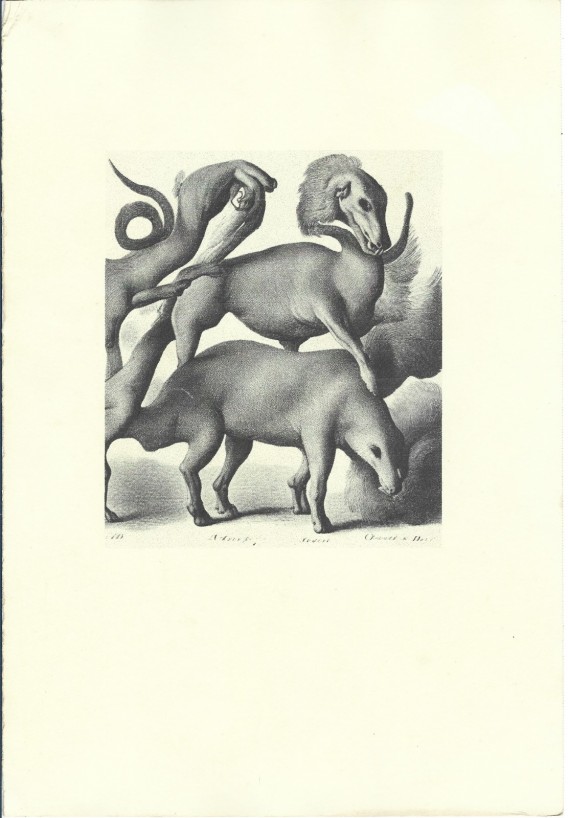Maps seem eternal, unquestionable to us, we have naturalized them. The lines that are drawn delimit territories, describe seabeds and outline constellations. In short, they define and constitute a reality.
These descriptions of the tangible, are one of the concerns of Pablo Sandoval’s work. He is situated in a space that questions the naturalization of these scientific devices and the facts they describe. Having as a canonical text the Analytical Language of John Wilkins by Borges, where the Argentine writer proposes a certain encyclopedia of a Chinese emperor with cataloging and ways of ordering that escape our modern conceptions. Ways in which the personal, the general and the specific intermingled. Thus, starting from this enlightening text that teaches us the fictitiousness of scientific categories, Sandoval appropriates the actions of collectors and scientists (pre and modern). He assumes the same role and uses the same methodologies to draw new maps and other knowledge.
In Where the Maps Begin Sandoval is the cartographer who draws his surroundings. The covers of System of the Elements (covers) are the covers of the catalogs of the artist’s collections. Create a natural history of it through what surrounds and possesses it. In them the titles are disparate: Shaking like crazy, Touched by Apollo, Invisibles… are nothing more than the categories used to organize these objects. It is at the desk, on the table, where the artist works, analyzes and generates his branches of knowledge. It is Sandoval’s desk that is raised on multiple legs that are posed as columns, like pillars of the temple of knowledge, closely related to the neoclassical architectural ideas of museums and libraries.
The artist has collected mysterious creatures in his unusual natures. Built to illustrate the stories of unknown creatures. Sandoval starts from artificial intelligence to generate a new imaginary of chimerical beings. That they are nothing more than fragments of already known creatures that structure a new body. This is how he approaches the illustrator’s process when an explorer described the new animals there were. Sandoval would also act as illustrator of the firmament with the piece Stellar Atlases. Representing the cosmos with different constellations, new associations between the points drawn by the stars that escape the traditional constellations.
We could fall into the temptation that Sandoval’s resulting actions and works are mere imitations of (pre) scientific methodologies, however, he is really generating new knowledge. Furthermore, he is constantly understanding that all these readings that he gives of his environment cannot be universalized, cannot be naturalized, because they all emanate from a central point, which is him and his experience.
__________________________
Pablo Sandoval has a doctorate from the University of Murcia, where he specialized in artistic research. His artistic practice focuses on the social context, on analyzing how we understand the world from collections and the concept of wonder linked to cabinets of curiosities, a concept that is prevalent in our contemporary vision of art.
He has given courses and talks at various educational and cultural institutions, including the University of Murcia, the National University of Colombia, the Master of Artistic Production at the University of Granada, the Center for Documentation and Advanced Studies of Contemporary Art (CENDEAC) in Murcia, and the University of Fine Arts of the Basque Country, among others.
His artistic work has been exhibited both at the national level in exhibitions at the Centro Párraga, the Sala La Capilla in Murcia, the El Campello Cultural Center, the Art Nueve Gallery in the same city, at PHOTO Alicante in La Lonja, the Bienal de Mislata, the Luz Madrid festival at Hyper House, the Contemporary Art Meeting (EAC23) at the University of Alicante Museum, Museari Queer Art 5 at the Mayor’s College Rector Peset in Valencia, the European Plastic Arts Contest at the University of Seville, at the Biennale of Young Artists from Europe and the Mediterranean, curated by the School of Water in San Marino or at Art Theorema: La guerra è finita! La pace non è ancora iniziata, curated by Imago Mundi of the Benetton Foundation at the Gallerie delle Prigioni, Treviso, Italy among others.
In addition, he has carried out artistic stays and residencies, such as Re-utopia with NigredoTV and Modus Operandi gallery in Madrid, Alibaba in La Postiza in Murcia, and the VIII Residency and scholarship for artistic creation and research at the Museum of the University of Alicante.
In recognition of his work, in 2020 he won first prize in the CreaMurcia competition in the visual arts category, and a year later he won second prize at the Contemporary Art Meeting of the University of Alicante Museum. In 2023, he was selected to participate in the XIII Meeting of New Artists (EAN13) of Galicia.


